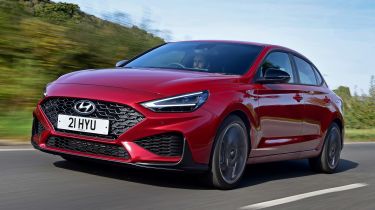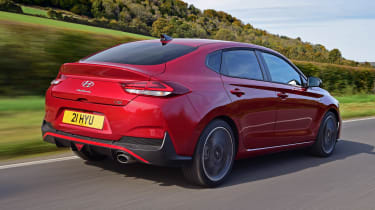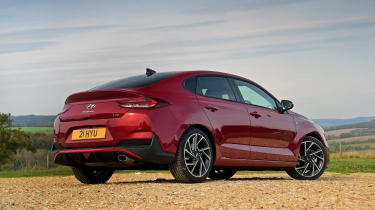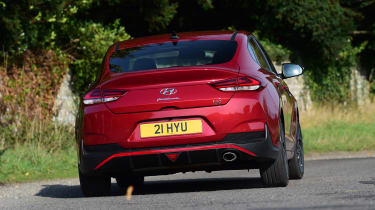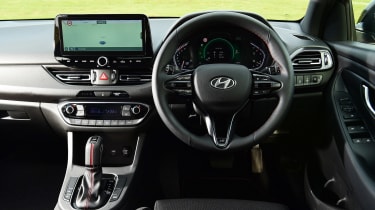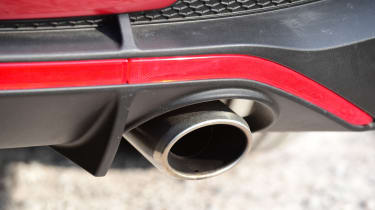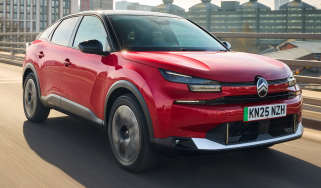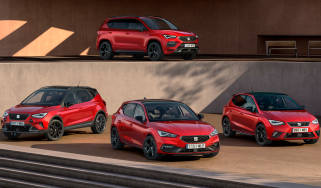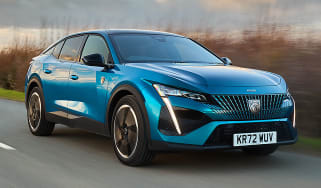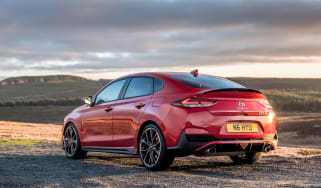Hyundai i30 Fastback hatchback review
"The talented Hyundai i30 gets the five-door coupe treatment"
Pros
- Equipment
- Plenty of grip
- Surprisingly practical
Cons
- Stiff N Line suspension
- Competent rather than fun
- Not as rounded as some rivals
The Hyundai i30 Fastback is a more rakish five-door coupe version of the i30 hatchback that squares up against the Mazda3 Fastback, as well as more conventional hatches like the Ford Focus and Vauxhall Astra. Intended to appeal to buyers looking for a stylish yet practical family car, it’s an attractive package, albeit one that's flawed in some key areas.
A strong, economical petrol engine, quality construction, great standard equipment, a comfortable interior and relatively low price are all likely to appeal, along with secure handling and an impressive five-year unlimited-mileage warranty. However, the sole N Line trim has suspension that's far too stiff for the level of performance on offer, ruining ride comfort, while the DCT automatic gearbox is one to avoid.
Facelifted towards the end of 2020, the i30 Fastback was given sharper looks, thanks mainly to new headlights, and a new 158bhp 1.5-litre turbo petrol engine with 48-volt mild-hybrid hardware. It can get the i30 from 0-62mph in a spritely 8.8 seconds and on to 130mph.
Inside, there's a 10.25-inch touchscreen with Apple CarPlay and Android Auto, wireless smartphone charging and Bluelink connectivity, which brings real-time information into the car, and allows you to check on the vehicle from a smartphone app.
More reviews
The i30 Fastback exists in a niche almost all of its own – it offers a body that’s similar in concept to both the BMW 3 Series Gran Turismo and 4 Series Gran Coupe, albeit for a fraction of the price. Mazda is the only manufacturer to offer a similar recipe in the class at present; cars like the Mercedes CLA and Audi A3 saloon can be considered contenders but are considerably more expensive.
It will appeal to drivers who want to stand out but considering the N Line version starts at around £25,000, the i30 Fastback N is a tantalising proposition, particularly on a PCP deal. This comes with up to 271bhp and a much more impressive chassis with adaptive suspension.
MPG, running costs & CO2
Leading up to its facelift, the i30 Fastback was available with two petrol engines, starting with a 118bhp 1.0-litre T-GDi capable of returning up to 54.3mpg with a six-speed manual gearbox. If this wasn't enough power, a 138bhp 1.4-litre T-GDi returning around 50mpg was also available, fitted with either a manual or DCT automatic gearbox.
These have both been replaced with a new 1.5-litre petrol engine, fitted with 48-volt mild-hybrid tech that harvests energy as the car slows down and uses it to make the engine more efficient. Official consumption figures are 45.6mpg for the manual and 47.1mpg for the DCT automatic, with CO2 emissions from 136-141g/km.
The manual gearbox is clever, too, seamlessly disconnecting from the engine when the car is coasting to help save fuel.
The Hyundai i30 Fastback N Line sits in insurance group 18, which is higher than before the facelift owing mostly to the added performance of the new engine. As with all Hyundai models, the i30 Fastback benefits from a five-year/unlimited-mileage warranty, plus five years of roadside assistance and yearly health checks.
Engines, drive & performance
Just like its hatchback and Tourer counterparts, the i30 Fastback is a competent performer from behind the wheel but you may also want to consider the i30 Fastback N hot hatchback before you buy one.
The new 158bhp 1.5-litre petrol engine offers decent power at low revs and is quiet, while the standard six-speed gearbox shifts smoothly, making it our pick. The car can get from 0-62mph in 8.8 seconds, so it's brisk rather than rapid.
The DCT dual-clutch automatic is best avoided, as it feels slow to make changes in most driving situations. Considering the N Line's sporty feel, we were also expecting steering wheel-mounted paddles to make manual shifting more involving but they’re absent.
The N Line Fastback has received some updates to improve handling and it shows – stiffer, lower suspension helps make the car handle tidily. The car’s brakes are competent, too. The steering feels a little heavy but it's responsive and consistent, and it makes the car easy to place on the road. Unfortunately, though, the stiff setup goes too far in a car with this level of performance, and there's no button on the dashboard to make it softer - unlike in the i30 Fastback N, which isn't hugely more expensive. As a result, the N Line fidgets and crashes over bumps instead of flowing with the road.
Interior & comfort
The Hyundai i30 Fastback’s interior is a great place to be, with all of its switchgear and major controls feeling just as precise as those in its main rivals. Overall quality is good and standard equipment is excellent – all facelifted cars get a 10.25-inch infotainment screen with sat nav, Apple CarPlay and Android Auto, Bluetooth with voice recognition.
Wireless phone charging, plus a rear parking assist system with a rear-view camera, 18-inch alloys, front foglights and a leather steering wheel are also included. The sporty N Line trim also gets a new bodykit and interior upgrades like sports seats, metal pedals and a sporty steering wheel.
Practicality & boot space
Despite appearances, the Hyundai i30 Fastback doesn’t compromise too much on interior space despite its swooping roofline. There’s as much legroom in the rear as you get in the hatchback model, while headroom is only marginally affected; a six-foot passenger can fit behind a six-foot driver with no issues, which is a remarkable feat of packaging. Interior storage is good, with decent-sized door bins and a central armrest cubby stand-out features. All models get a ski hatch, too.
The i30 Fastback has a 450-litre boot, which is significantly larger than the 395 litres found in the standard hatchback. The i30 Tourer still wins in the loadspace stakes with with its 602-litre load area, though. In comparison, the Mazda3 Fastback has a 419-litre boot, which although 55 litres more than the equivalent Mazda3 hatch is still some way off the i30 Fastback’s figure.
Reliability & safety
The Hyundai i30 Fastback didn't feature in our 2020 Driver Power owner satisfaction survey but Hyundai itself finished 13th overall out of 30 manufacturers, ahead of big players like Volkswagen in 19th, Ford in 24th and Vauxhall in 29th.
Euro NCAP hasn't crash-tested the Hyundai i30 Fastback specifically, but it awarded the i30 hatchback its maximum five-star rating, with an 88% adult occupant rating and 84% child occupant rating. It’s likely that the Fastback will offer much the same level of protection.
There’s a good amount of standard safety kit, much of which is shared with the the i30 hatchback. All trim levels get lane departure and forward collision warning systems, along with lane-keep assistance, autonomous emergency braking (AEB) and hill-start assistance. Premium and Premium SE models add blind-spot monitoring and a rear cross-traffic alert system.
Reliability is largely unconfirmed, but Hyundai’s strong reputation and five-year/unlimited-mileage warranty should bring extra peace of mind, as should the included five years of annual health checks.

